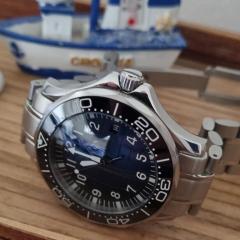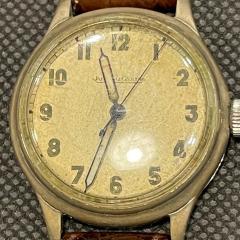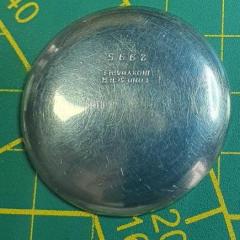-
Similar Content
-
Recently Browsing
- No registered users viewing this page.
-
Topics
-
Posts
-
I suspected that might be the cause but I’m definitely still a newbie and it’s good to get some confirmation. I’ll have to look for a donor and see whether I can address it that way. Appreciate the reply-
-
By nevenbekriev · Posted
Hi Daniel, It is important to inform what way of turning the staff You have choosen. Is it on T-rest with hand held gravers or with cros-slide support? This are quite different approaches and we will give beter advices if we know what You are doing. As I understand, You have HSS gravers. Well, HSS this days is not what it was say 50 years before, as they don't put tunsten in it any more. So, in practice, modern HSS tools are good for nothing. Old ones will probably do. New HSS tools with cobalt perform beter and are close to performance of old HSS tools. One possible reason for pivot turning problems is the steel is soft. Soft steel will tend to bend and stick to the tip of the graver. The other possible reason is the steel is to hard for the graver. If You let the material to get burnished instead of cut clear, the surface gets even more hard and thus HSS graver tip will get dull and will burnish further instead of cutting. So, turning needs correct position of the graver and attack angles, this is especially magnified when cutter is HSS. So, my advice is to use carbide cutters. The hardening of the steel is another, different craft, that needs a lot of learning. Preparing of the steel for balance staffs (and all other parts) needs to be made avoiding risks of incorrect heat treatment. The main risk is to overheat the steel - this makes it brittle and useless. Of course, one must know what kind of steel is to be hardened and what are it's critical temperatures. But typically for tool steel with 1% carbon content, heating for the hardening must be about 750 degr. celsius and no more than 790. Heating above 800 degr. ruins the steel making it with big crystals in the structure and brittle. So If You will heat treat the steel by Youself, make experiments with examples that You will break after hardening and bluing to ensure that the structure is uniform grey color with very small crystals. The easier way for beginner is to use rollers from roller bearings. They are (usually) made from good steel and need only blue tempering. -
Hi pap3r, sorry for not getting back to you sooner. I used steel rod, i made a hole in one end to fit over the shaft of the motor, i used 3 grub screws to lock it into place. I lathed down the other end to fit the elma basket frame lid, that is also held in place by a grub screw. I have used the machine alot since this modification and it has worked perfectly, as long as you don't use a water based cleaner you won't have any problems with rust. Hope this helps.
-
By nevenbekriev · Posted
I need to see the movement. If there is enough 'meat' under the post to drill a hole and to press new seel post there, this is a piece of cake. Of course, one can do it on the late with face plate. If I have to do it this way, will center by the undamaged part of the post. I don't have scope and never have used one. My Optivisor (#7) glasses is what I use and this is enough. placing the cutter tip close to the object (the post) and observind the distance between them while rotating the spindle helps to find the needed direction for moving the movement in the face plate. The easier way is to file the post with dremel and drill the hole by hand, the drill bit in pin wise. Centering with center drill bit, which donesn't bend and moving the center when turning the wise and pressing in needed direction is possible. The circular traces from mashining the post in the plate are enough to find the center. Another way is to use depthing tool to find the correct distance between posts of the minute and intermediate wheels and the distance between intermediate and the wheel in the rocker when rocker is in setting position and to draw arches, the crossing point will be the center for the post. For sure the cannon pinion must be checked, such wear is not normal in this place. Is there a calendar on the movement? Setting the calendar and cannon seizing due lack of lubrication may explain this kind of wear. -
I honestly read this as a cruel joke, use a large reamer to undo all the work you just did reducing the hole to refit the barrel arbor. Now I get it - reamer only on the very outer edge, but I have a deburring tool for that anyway. I can't believe they had an in-house astronomer and in-house observatory at the Elgin factory to determine the reference time from a known star.
-











Recommended Posts
Join the conversation
You can post now and register later. If you have an account, sign in now to post with your account.
Note: Your post will require moderator approval before it will be visible.